
.png)

.png)
.png)


-
.png) 0086-757-85407388
0086-757-85407388 -

-
 terrychen@wintoly.com
terrychen@wintoly.com


.png)

.png)
.png)


.png)



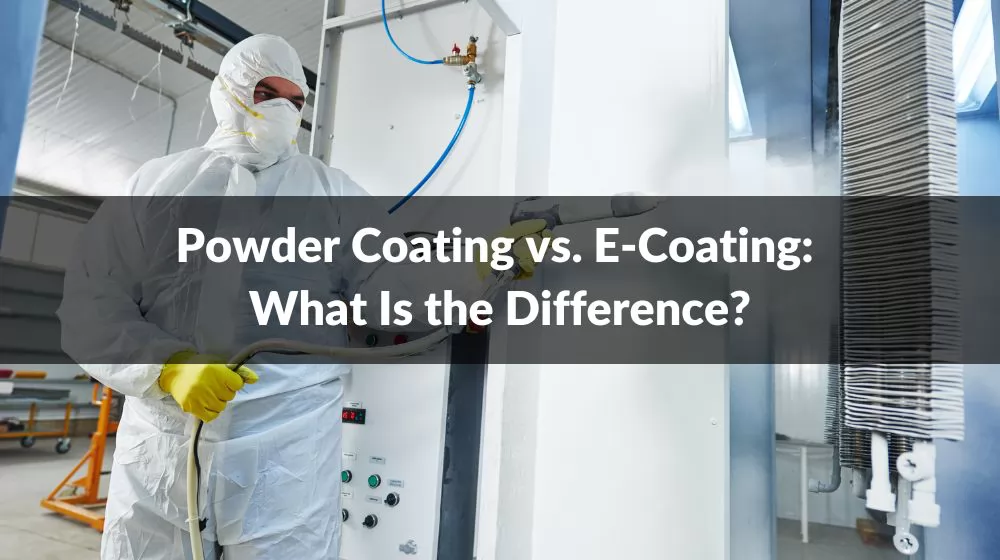
Table of Contents:
In the realm of protective coatings, Powder Coating and E-Coating stand out as two prominent methods, each offering unique advantages and applications. Understanding the differences between these two techniques is crucial for industries seeking optimal solutions for enhancing durability, appearance, and corrosion resistance. In this exploration, we delve into the distinctive features of Powder Coating and E-Coating, shedding light on their respective processes, applications, and key differentiators.
Powder coating is a popular method of applying a protective and decorative finish to various surfaces, commonly used in industries ranging from automotive to household appliances. This coating process involves the application of a dry powder consisting of finely ground particles of pigment and resin onto a substrate. The substrate, often metal, is electrically grounded, and the powder is electrostatically charged before being sprayed onto the object.
Once applied, the coated item is then baked in an oven, where the powder particles melt and fuse to form a smooth and durable finish. The result is a resilient coating that provides excellent protection against corrosion, UV rays, and various environmental factors. Powder coating is renowned for its versatility, offering a wide range of colors and finishes, including matte, glossy, and textured options.
Durable Finish: One of the primary advantages of powder coating is its exceptional durability. The cured coating is resistant to chipping, scratching, fading, and general wear and tear, making it ideal for items that experience frequent use and exposure to harsh conditions.
Environmental Friendliness: Unlike traditional liquid coatings, powder coating is considered environmentally friendly. The process emits little to no volatile organic compounds (VOCs), reducing air pollution and minimizing harm to the environment.
Cost-Effective: Powder coating is often more cost-effective than alternative coating methods. The efficiency of the process, minimal waste generation, and the ability to reclaim and reuse overspray contribute to cost savings for manufacturers.
Wide Range of Colors and Finishes: Powder coating offers a vast array of color options and finishes. This versatility allows manufacturers and consumers to choose from matte, glossy, metallic, or textured finishes, providing aesthetic flexibility for a variety of applications.
Corrosion Resistance: The cured powder coating creates a protective barrier that enhances the substrate's resistance to corrosion. This makes powder-coated items suitable for use in challenging environments, such as outdoor structures or automotive components.
Uniform Coating Thickness: The electrostatic application of the powder ensures a consistent and uniform coating thickness across the entire surface. This helps avoid issues like drips and uneven coverage, resulting in a high-quality finish.
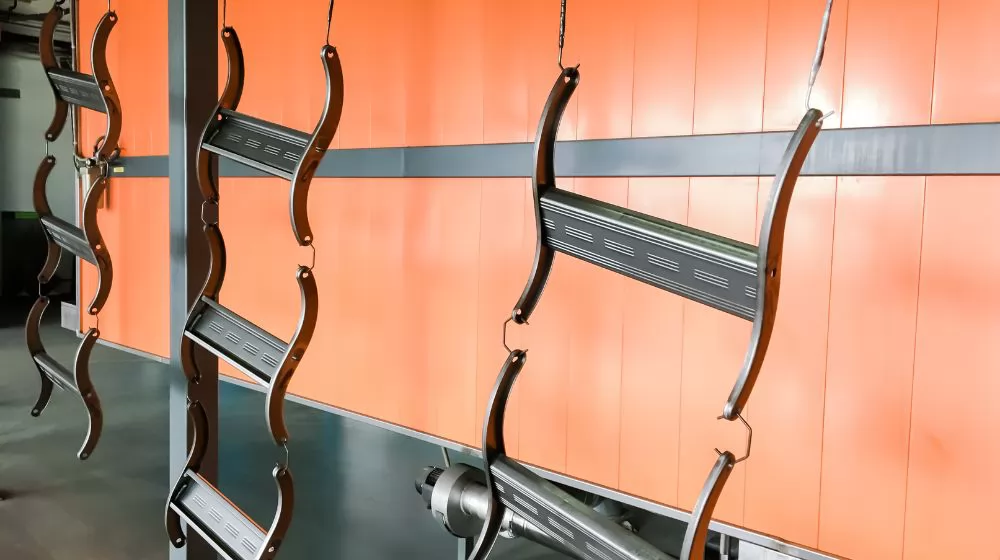
Thin Film Application: Achieving very thin coating films can be challenging with powder coating. This may be a consideration for applications where a thin or delicate finish is crucial.
Complex Shapes and Recesses: Coating intricate or complex shapes with recessed areas can be difficult. Powder coating relies on electrostatic attraction, and areas that are hard to reach may not receive an even coating, leading to potential coverage issues.
Pre-treatment Requirements: Proper surface preparation is essential for effective powder coating. The substrate must be thoroughly cleaned and, in some cases, pre-treated to ensure good adhesion. Failure to do so can result in a compromised finish.
Limited to Heat-Resistant Substrates: Powder coating requires curing in an oven, limiting its application to heat-resistant substrates. Items that cannot withstand the curing temperatures are not suitable for this coating method.
Color Change Challenges: Switching colors during production can be more time-consuming with powder coating compared to liquid paint. The equipment and application system need to be thoroughly cleaned between color changes to prevent color contamination.
Initial Equipment Investment: Setting up a powder coating system requires an initial investment in specialized equipment, such as spray booths and curing ovens. While this investment can lead to long-term cost savings, it may be a barrier for smaller businesses or those with limited resources.
Electrocoating, commonly referred to as E-Coating or electrophoretic deposition (EPD), represents an advanced technique for applying protective coatings to a variety of substrates, particularly metals. This sophisticated process entails immersing the target object into a bath containing finely dispersed paint or coating material, with a distinctive feature of employing an electric current for the coating application.
Here's a detailed breakdown of the E-Coating process:
Preparation: The substrate undergoes meticulous cleaning to eliminate contaminants such as oils or rust, ensuring optimal adhesion of the coating.
Immersion: The cleaned substrate is immersed in a bath comprising a water-based solution that contains paint particles carrying a positive charge.
Electrophoresis: With the application of an electric current, the positively charged particles in the coating solution migrate towards the grounded object (the substrate), facilitating a controlled and even deposition of the coating material onto the surface.
Curing: Following the coating application, the coated object proceeds through a curing process, typically involving baking in an oven. This step is crucial for forming a durable and protective finish.
E-Coating finds extensive application across various industries, including automotive, appliances, and aerospace, owing to its capacity to deliver outstanding corrosion resistance and uniform coverage. This method excels in reaching challenging areas and recesses, making it a preferred choice for industries with stringent coating requirements.
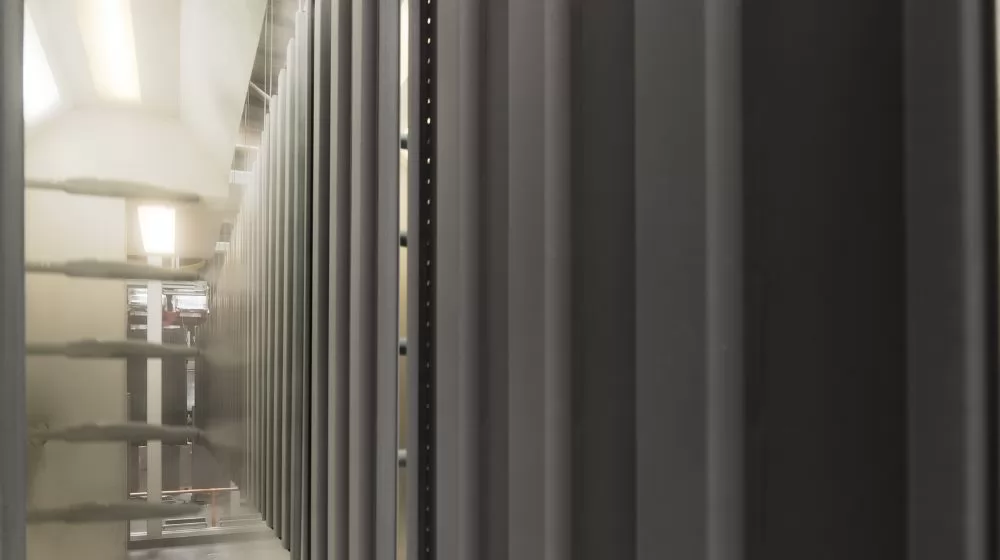
Electrocoating, or E-Coating, boasts several advantages that contribute to its widespread adoption in diverse industries:
Uniform Coating Thickness: E-Coating provides a consistent and uniform coating thickness, even on complex shapes and hard-to-reach areas. The electrophoretic deposition process ensures that the coating material evenly covers the entire surface of the substrate.
Excellent Corrosion Resistance: E-Coating is renowned for its exceptional corrosion resistance. The deposited coating creates a protective barrier that helps shield the substrate from corrosive elements, making it particularly valuable for applications in challenging environments.
High Efficiency: The electrophoretic process is highly efficient, ensuring minimal wastage of coating material. This efficiency is attributed to the targeted application of the coating due to the electrically induced migration of particles toward the substrate.
Environmentally Friendly: E-Coating is considered environmentally friendly as it often utilizes water-based coating solutions. This significantly reduces the emission of volatile organic compounds (VOCs), contributing to a more sustainable and eco-friendly coating process.
Versatility in Coating Composition: The flexibility of E-Coating extends to the composition of the coating material. This adaptability allows manufacturers to tailor the coating to specific performance requirements, enhancing the overall functionality of the finished product.
Coverage of Recessed Areas: E-Coating excels in covering intricate and recessed areas of objects, ensuring comprehensive protection across the entire surface. This makes it suitable for coating complex components found in automotive, electronics, and other industries.
Cost-Effective: The efficient use of coating material, combined with the ability to cover complex shapes, contributes to the cost-effectiveness of E-Coating over the long term. This is particularly beneficial for mass production processes.
While electrocoating (E-Coating) offers various benefits, it also comes with certain limitations that should be considered:
Film Thickness Constraints: Achieving extremely thin coatings can be challenging with E-Coating. The process tends to deposit a relatively thicker film compared to some other coating methods. This may be a consideration for applications where a thin coating is crucial.
Color Change Complexity: Switching colors during production in E-Coating systems can be more intricate compared to certain coating processes. Thorough cleaning and maintenance are required between color changes to prevent color contamination, potentially leading to longer changeover times.
Initial Equipment Investment: Similar to powder coating, setting up an E-Coating system requires an initial investment in specialized equipment, including immersion tanks, rectifiers, and curing ovens. This upfront cost might pose a challenge for smaller businesses or those with budget constraints.
Complexity of Process Control: Maintaining precise control over the E-Coating process can be intricate. Factors such as voltage, bath chemistry, and temperature need to be carefully monitored and adjusted to ensure consistent and high-quality results.
Limited to Conductive Substrates: E-Coating is most effective on conductive substrates. Non-conductive materials may require additional pre-treatment or may not be suitable for this coating method.
Not Ideal for Exterior-Only Coating: E-Coating involves the immersion of the entire object, making it less suitable for applications where only certain parts of an object need to be coated. Masking specific areas can be challenging, and this limitation might affect the overall efficiency of the process.
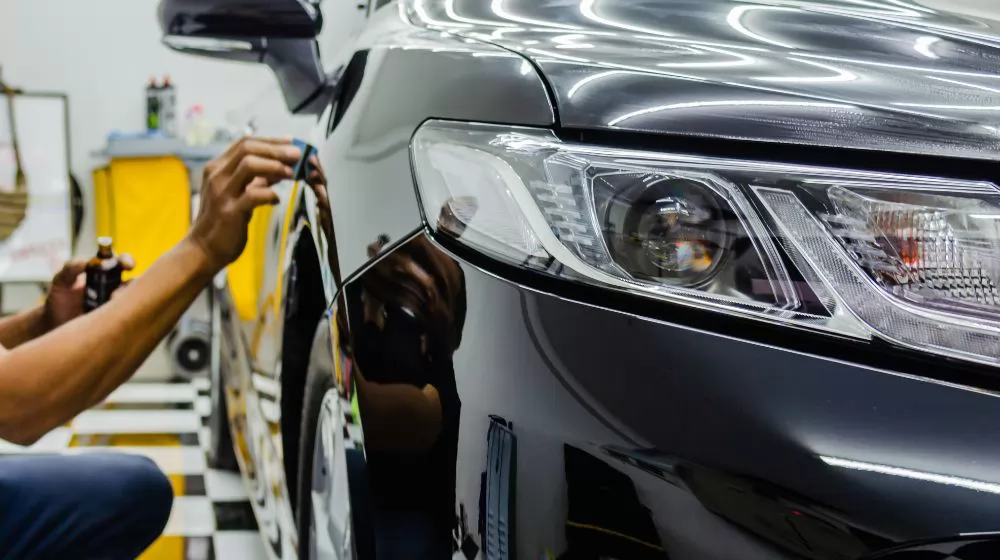
Powder coating finds a wide range of applications across various industries due to its versatile and durable nature. Some prominent applications include:
Automotive Industry: Powder coating is extensively used in the automotive sector for coating parts such as wheels, bumpers, chassis components, and engine parts. Its durability and resistance to corrosion make it ideal for enhancing the longevity and appearance of automotive components.
Appliances: Household appliances, such as refrigerators, washing machines, and ovens, often undergo powder coating. The process provides a robust and attractive finish, protecting appliances from scratches, rust, and other forms of wear and tear.
Furniture: Powder coating is a popular choice for coating metal furniture, both for indoor and outdoor use. Patio furniture, chairs, tables, and frames benefit from the weather-resistant and durable finish that powder coating provides.
Architectural Applications: In the construction and architectural industries, powder coating is employed for coating aluminum and steel components used in windows, doors, curtain walls, and other architectural elements. The range of available colors and finishes allows for customization in building design.
Bicycles and Sporting Goods: Bicycle frames, sports equipment, and outdoor recreational gear often undergo powder coating. The process not only enhances the aesthetic appeal but also provides a durable and protective finish for items exposed to varying weather conditions.
Metal Shelving and Racking: Industrial and retail storage solutions, such as metal shelving and racking systems, benefit from powder coating. The coating enhances the resilience of these structures in warehouse and retail environments.
Electronics: Certain electronic components, especially those exposed to environmental factors, can be powder coated to provide insulation and protection against corrosion. This is common in items like metal enclosures for electronics.
Agricultural Equipment: Farm machinery and equipment, including tractor parts and agricultural implements, often undergo powder coating to enhance their resistance to the elements and the harsh conditions of agricultural operations.
Lighting Fixtures: Powder coating is widely used in the manufacturing of lighting fixtures, providing a durable and aesthetically pleasing finish for both indoor and outdoor applications.
Motorcycle Parts: Powder coating is a popular choice for coating motorcycle parts, including frames, fenders, and exhaust systems. The durability of the finish contributes to the overall performance and appearance of the motorcycle.
Electrocoating (E-Coating) is employed in various industries for its ability to provide uniform and corrosion-resistant coatings. Some key applications of E-Coating include:
Automotive Components: E-Coating is extensively used in the automotive industry to coat a wide range of components, including vehicle bodies, chassis, brackets, and various metal parts. The process ensures even coverage and corrosion protection, contributing to the durability of automotive components.
Aerospace Parts: Critical components in the aerospace industry, such as aircraft parts and components, benefit from E-Coating. The uniform coating helps protect against corrosion and environmental factors, ensuring the longevity and performance of aerospace structures.
Appliances: Household appliances, similar to powder coating applications, undergo E-Coating for enhanced durability and protection. Items like dishwasher racks, oven interiors, and washing machine components benefit from the corrosion resistance provided by E-Coating.
Electrical Enclosures: E-Coating is commonly applied to electrical enclosures and cabinets, providing insulation and protection against environmental elements. This is especially important for outdoor electrical equipment exposed to varying weather conditions.
Metal Furniture: E-Coating is a preferred choice for coating metal furniture, both indoor and outdoor. Chairs, tables, and other furniture items benefit from the uniform and durable finish that E-Coating provides.
HVAC Components: Heating, ventilation, and air conditioning (HVAC) components, including air handler units, coils, and ductwork, are often E-Coated for corrosion resistance. This is crucial in maintaining the efficiency and longevity of HVAC systems.
Farm Equipment: Agricultural machinery and equipment, such as tractor components and implements, undergo E-Coating to protect against the corrosive effects of exposure to agricultural environments. The process contributes to the longevity and reliability of farm equipment.
Construction and Architectural Elements: E-Coating is used in the construction industry for coating metal components used in architectural elements, including fences, railings, and structural steel. The corrosion resistance and uniform coverage make it suitable for exterior applications.
Lighting Fixtures: Similar to powder coating, E-Coating is applied to lighting fixtures, providing a durable and protective finish for both indoor and outdoor lighting applications. The process ensures consistent coverage even in intricate designs.
Medical Equipment: Certain metal components of medical equipment that require corrosion resistance and a uniform finish can undergo E-Coating. This includes items like metal frames for medical devices and equipment.
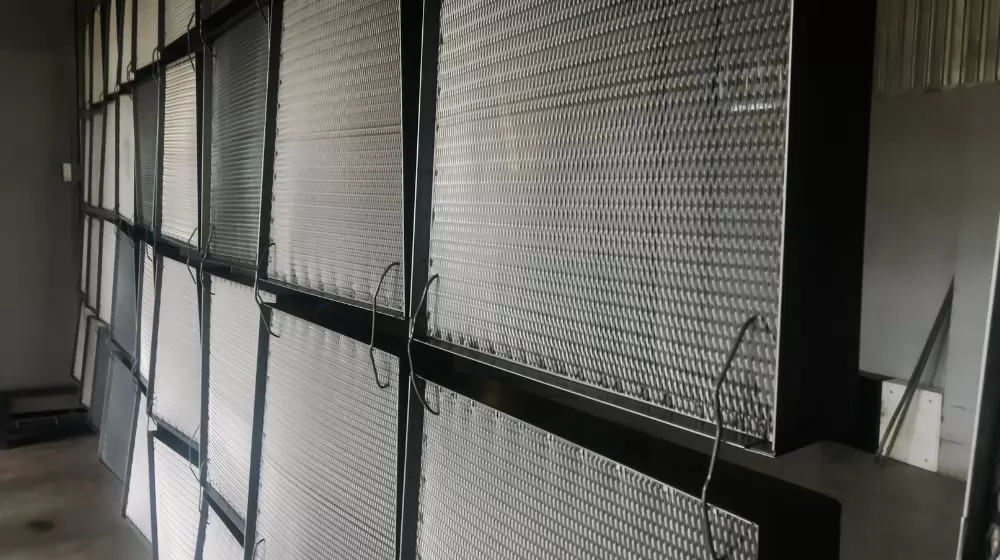
Application Process:
E-Coating: The substrate is immersed in a bath of water-based coating material containing positively charged paint particles. Through electrophoresis, the particles migrate and deposit uniformly onto the substrate. The coated object is then cured to create a durable finish.
Powder Coating: Dry powder, consisting of pigment and resin particles, is electrostatically sprayed onto a grounded object. The charged particles adhere to the substrate, forming a powder layer. The coated object is then cured in an oven, melting and fusing the powder into a smooth and resilient finish.
Coating Material:
E-Coating: Utilizes water-based coating solutions, which often include acrylics, epoxies, or other polymers with positively charged particles.
Powder Coating: Involves dry powder composed of thermoplastic or thermoset polymers, pigments, and sometimes metallic flakes.
Coating Thickness:
E-Coating: Offers precise control over coating thickness, providing a uniform layer even on complex shapes. The immersion process ensures consistent coverage.
Powder Coating: May result in variations in thickness, especially in recessed or intricate areas where the electrostatic charge may have difficulty reaching.
Coverage of Complex Shapes:
E-Coating: Excels at coating intricate or three-dimensional shapes, as well as parts with recessed areas, due to the immersion process and the ability of charged particles to reach challenging geometries.
Powder Coating: While effective on flat or gently curved surfaces, it may face challenges in achieving uniform coverage on complex shapes or areas with deep recesses.
Pre-treatment Requirements:
E-Coating: Requires meticulous cleaning and, in some cases, pre-treatment of the substrate to ensure optimal adhesion. This preparation is essential for the electrocoating process.
Powder Coating: Requires thorough surface preparation to remove contaminants, ensuring proper adhesion of the powder to the substrate.
Color Change Complexity:
E-Coating: Typically involves simpler color changeovers since the coating bath is continuously replenished with fresh coating material.
Powder Coating: Requires thorough cleaning of equipment between color changes, including the spray booth and application guns. This process can be more time-consuming and complex compared to E-Coating.
Environmental Impact:
E-Coating: Often considered more environmentally friendly as it typically involves water-based solutions, resulting in fewer volatile organic compounds (VOCs) emitted during the coating process.
Powder Coating: Generally considered environmentally friendly, but the powder itself may contain VOCs. The efficiency of powder application reduces waste, contributing to its eco-friendly profile.
The choice between powder and electrophoretic coatings depends on specific requirements, industry applications and desired results. Powder coatings excel in versatility and a wide range of surface finishes, while electrophoretic coatings stand out through uniform coverage and excellent corrosion resistance.
If in doubt about the choice between the two coatings, contact Wintoly for solutions and powder coating products, feel free to contact us!
1. What is powder coating?
2. What are the benefits of using powder coating?
3. What industries commonly utilize powder coating?
4. How do I choose a reliable powder coating supplier?
5. What types of powder coatings are available?
6. What is the typical minimum order quantity (MOQ) for powder coatings?
7. Can I request custom colors or formulations?
8. How do I ensure quality control when ordering powder coatings?
9. What are the typical curing requirements for powder coatings?
10. What are the payment terms typically offered by powder coating suppliers?
11. How can I request samples of powder coatings?
12. What should I consider when applying powder coatings?
When selecting a powder coating supplier, it’s essential to evaluate their product offerings, quality assurance processes, and customer service. Doing thorough research can help you find a supplier that meets your specific needs effectively.

 terrychen@wintoly.com
terrychen@wintoly.com
.png) 0086-757-85407388
0086-757-85407388
 6 Chaoyang Rd., National Demonstration Eco-industrialzone, Nanhai, Foshan,Guangdong,China
6 Chaoyang Rd., National Demonstration Eco-industrialzone, Nanhai, Foshan,Guangdong,China

.png)
